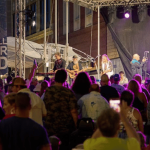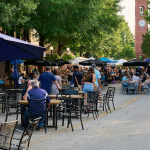Panthers Training Camp Means Millions to Local State Economies
The Carolina Panthers’ NFL season is nearing the halfway point with the Panthers sitting in first place, but the wins aren’t just on the football field. The three weeks the team spent practicing over the summer at Spartanburg’s Wofford College also meant big victories for the local and state economies, according to a new report from Clemson University.
Visitors from near and far meant had an estimated total impact of more than $13.2 million and supported more than 260 jobs, according to an economic impact report conducted by Clemson University’s Parks, Recreation and Tourism Management department on behalf of the Spartanburg Convention & Visitors Bureau.
That’s a new record, topping the $13 million in estimated impact from 2016.
“Carolina Panthers training camp has steadily made a bigger impact on our local economy, and this year’s report shows another increase that is important to note,” said Chris Jennings, the Executive Vice President of the Spartanburg Convention and Visitors Bureau. “The total attendance of more than 100,000 visitors was impressive, but our bottom line is the bottom line — total economic impact. It grew again this year, and that’s worth celebrating. We’re already looking forward to next year.”

The total impact, compiled in a report by Dr. Bob Brookover, is based on attendance data gathered by the Convention & Visitors Bureau and used the IMPLAN input/output model of economic impact. Total economic impact includes direct, indirect and induced spending. Indirect spending, based on the forecast model, includes a tourist buying a souvenir, and the store owner using the money to spend on utilities, rent, inventory, etc. Induced spending, meanwhile, includes spending when a waitress receives a tip and then spends that money on the local economy.
Total attendance in 2017 was 100,815. More than half of those visiting traveled more than 50 miles to see the Panthers in action. Those who travel farther distances are more likely to spend money in the region, whether it’s at hotels, restaurants or gas stations.
By Chris Winston






